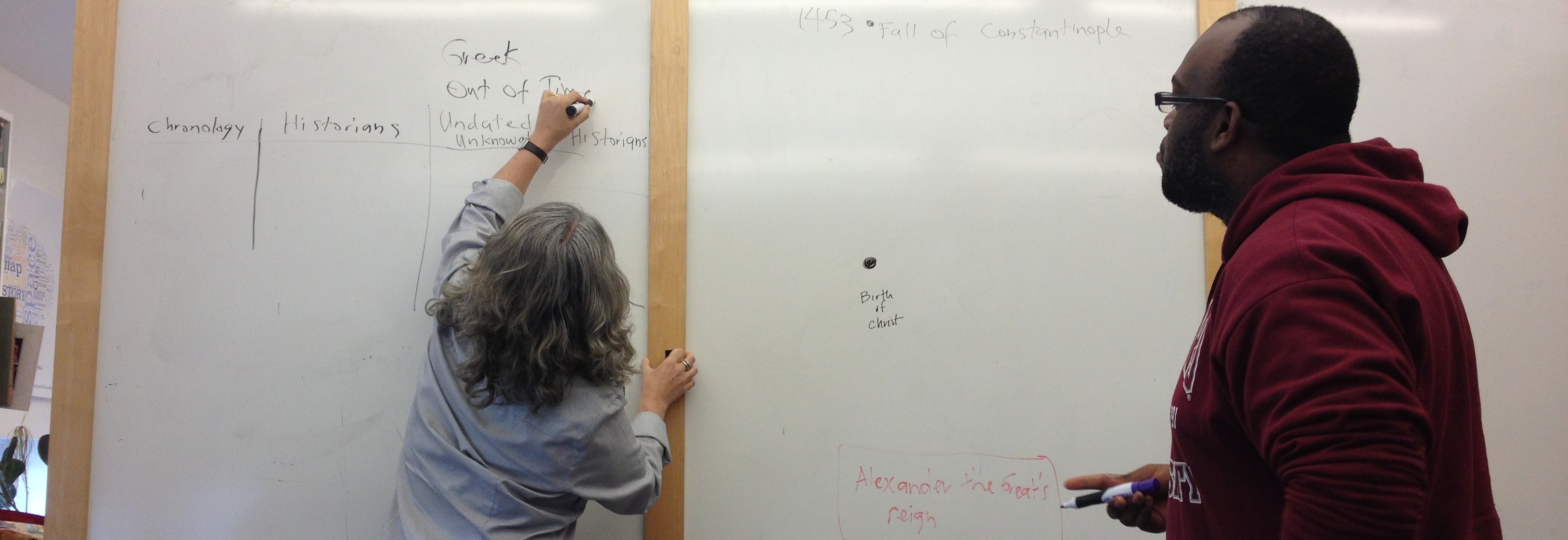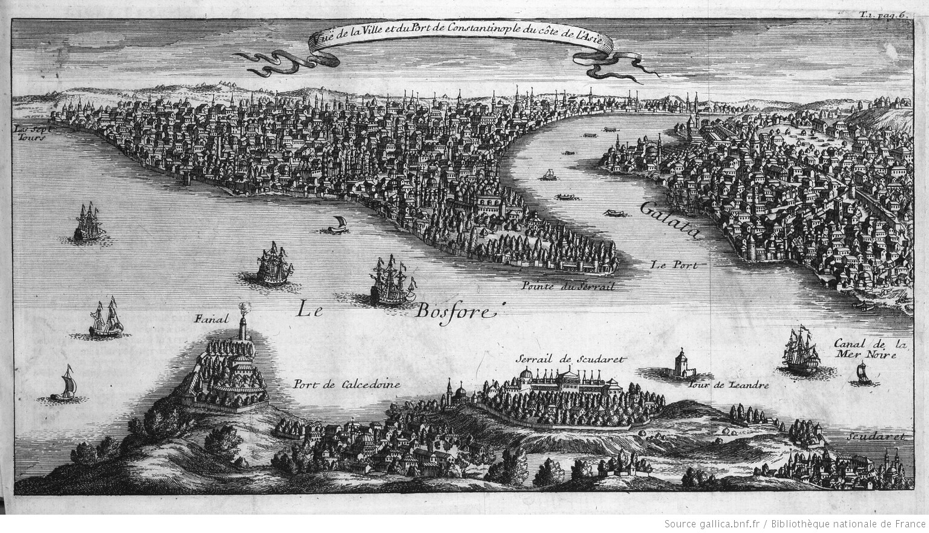
The open source data visualization platform, Palladio, was developed at Humanities + Design for Mapping the Republic of Letters. Research publications resulting from this project include interactive visualizations using For details, see the publications page at the project website: republicofletters.stanford.edu.
Audrey Calefas-Strébelle, Assistant Professor in the department of Languages, Literature, and Philosophy Mills College. Molly Stuart, Mills College

Mapping Early Modern French Orientalism aims to visualize the vast networks of exchanges between France and the Muslim Orient (Ottoman, Safavid, and Mughal Empires) and among the French Orientalists, from the 16th to the 18th centuries. From Guillaume Postel to Anquetil du Peron, who were the French Orientalists? What were their networks of communication, of relationship, and of education? How did they exchange information? How did ideas circulate and how was knowledge created and transmitted? What was the influence of their social networks in the circulation of knowledge and objects and in the shaping of the idea of the Orient? How did the Orient come to be known as such in the French mind? Did the orientalist movement produce a homogenized school of thought? And how did the idea of the Orient evolve over time?
Mapping Early Modern French Orientalism seeks to answer these and many more related questions, using the spatial visualization capabilities of Paladio to analyze relationships, circulation of knowledge and networks of communication, and produce interactive maps, graphs, lists, tables, and gallery that reveal correlations, trends, and magnitude in the data that had remained hidden hitherto, such as travel patterns, time frames, frequencies, and degrees of separation between orientalists. Once established, this project can be developed in time and space to include the French Orientalists of the later centuries, and to exceed the Muslim-Orient frame by including franco-chineese interactions.
Keith Baker, History Dan Edelstein, French and Italian Kate Sweetapple, Communication Design, University of Technology Sydney Jacqueline Lorber-Kasunic, Communication Design, University of Technology Sydney Nicole Coleman, Stanford University Libraries
Writing Rights visualises the evolution of ideas that inform the Declaration of the Rights of Man and of the Citizen. It provides an opportunity for collaboration between humanities and design in order to better understand the role of visualisation in humanistic inquiry. Part of this collaboration involves developing a critical understanding of visual knowledge production and how digital technologies facilitate this.
Throughout this project visualisation is used to capture the complex, contingent and improvised nature of the Declaration’s formation. Visualisation is positioned as both a method of inquiry – thinking through making – and as a form of argumentation and dissemination. Here, design becomes “an intellectual method…used to pose and frame questions about knowledge” (Burdick, et. al., 2012), as well as offering ways of interpreting and representing findings.
By mapping the iterative process of the Declaration through visualisation, the interpretive nature of textual production is made known. The patterns, rhythms, repetitions, and silences are revealed as the text is transformed into forms of visual notation. Notation creates an abstract composition recasting text as a new form of data enabling alternate ways of reading the movement of ideas over time. Therefore, the visualisation serves not as an itinerary of events but rather a choreographic score that records human interactions, dependencies and exchanges, and like a musical score offers itself up to be reinterpreted by each reader.
Visualisation is increasingly prevalent in many fields of research yet if it is to play a significant role in the humanities it must reveal the “interpretive sensibilities of theoretical inquiry.” (Drucker, 2010) It is this complimentary agenda shared by humanities and design that is the starting point for this cross-disciplinary project.
ReferenceBurdick, A., Drucker, J., Lunenfeld, P., Presner, T., and Schnapp, J. (2012) Digital_Humanities, MIT Press: Cambridge Massachusetts, p. 13
Drucker, J. (2010), ‘Graphesis: Visual knowledge production and Representation,’ Poetess Archive Journal, Vol. 2, No. 1, p. 1 – 36.
The Design for Endangered Languages project intends to explore ways to maintain, preserve, and revitalize endangered cultures by combining lexicographic and pedagogical methods from the humanities with communication design.
This project parallels Dr. Sarah Ogilvie’s Endangered Language Digital Humanities Project, which focuses on endangered languages around the world and efforts to preserve and revitalize them. Based on a survey of over two hundred indigenous communities around the world, this project responds to the urgent call to document and describe endangered languages before they disappear. It is estimated that one language currently dies every two weeks – at this rate, half of the word’s 6800 languages will disappear by the end of this century. Language is the key to culture, so when a language disappears so does a unique way of the viewing the world.
Research teams at Pratt Institute and Stanford worked together in an iterative exchange to develop models and explore visual arguments that capture critical aspects of the loss and preservation of endangered languages. The goal of this collaboration with the Communication Design department at Pratt Institute is to explore how Communication Design can support efforts to document, preserve and revitalize endangered languages and cultures by sharing methods, models, and software; to raise the profile of existing work on endangered languages and to encourage further field work on them; to explore and critique innovative methods for language documentation, to raise awareness of the threats facing linguistic diversity and of efforts to document and revitalize endangered languages
There were 12 students enrolled in the class. Some of the students were given the precious opportunity to work with the Mutsun language, receiving information and advice from Quirina Geary. Below is a selection of the final projects by the students.
Maria Teodora Comsa, Melanie Conroy, Dan Edelstein, Chloe Summers Edmondson, and Claude Willan
Related Publications: "The French Enlightenment Network," The Journal of Modern History 88, no. 3 (September 2016): 495-534. https://doi.org/10.1086/687927